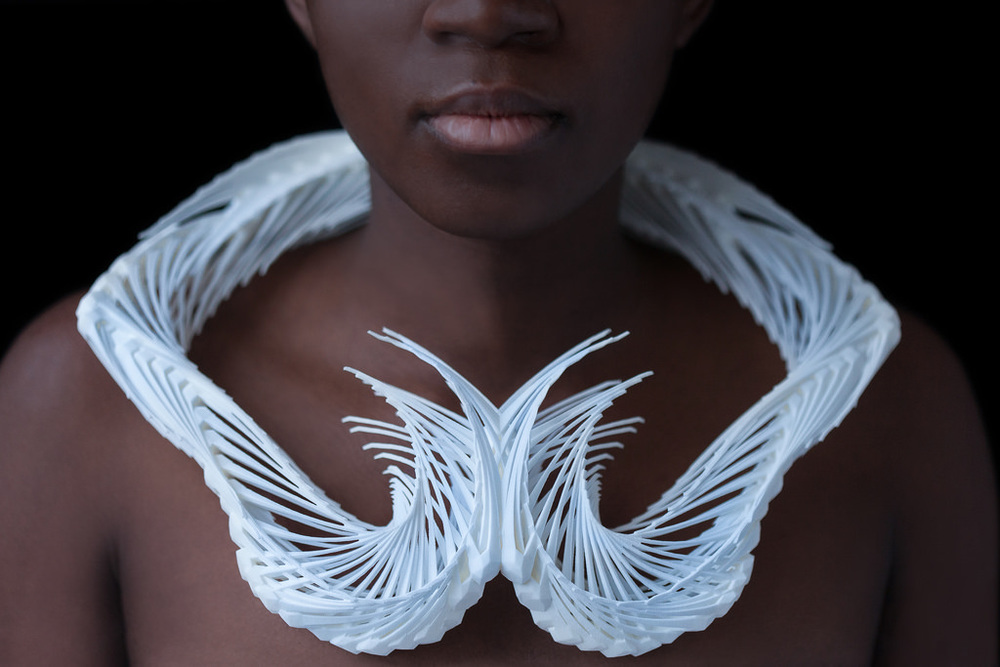
I was really impressed by CMU Architecture student Madeline Gannon and her investigations in the combination of Kinect-based body-scanning. The field of creative coding in architecture is new to me.
The necklace depicted in the first photo is actually a 3D squid pulled across space and time. It is one repeated form merged into a beautiful sculpture. I love the combination of natural (but not random) shape, and the intricate geometry ruled by parametrics. The squid changes shape as it’s being pulled, ruled by simulation physics. There is so much going on behind the scenes in this complex necklace.
The 3D model is then exported for 3D printing. These are one of the projects that are perfect examples of the intersection between digital design and physical fabrication. I think this is an excellent use of the software Reverb. Reverb is context aware, and allowed Madeline to design these ready to print wearables. This new tech uses computer vision to record chronomorphology – a composite recording of an object’s movement. In this case it records the 3D squid which has rigged limbs. It is constructed as a closed mesh, with a spring skeleton that prevents self-intersections.
See more details about Madeline’s work here.
![[OLD FALL 2018] 15-104 • Introduction to Computing for Creative Practice](../../../../wp-content/uploads/2020/08/stop-banner.png)
